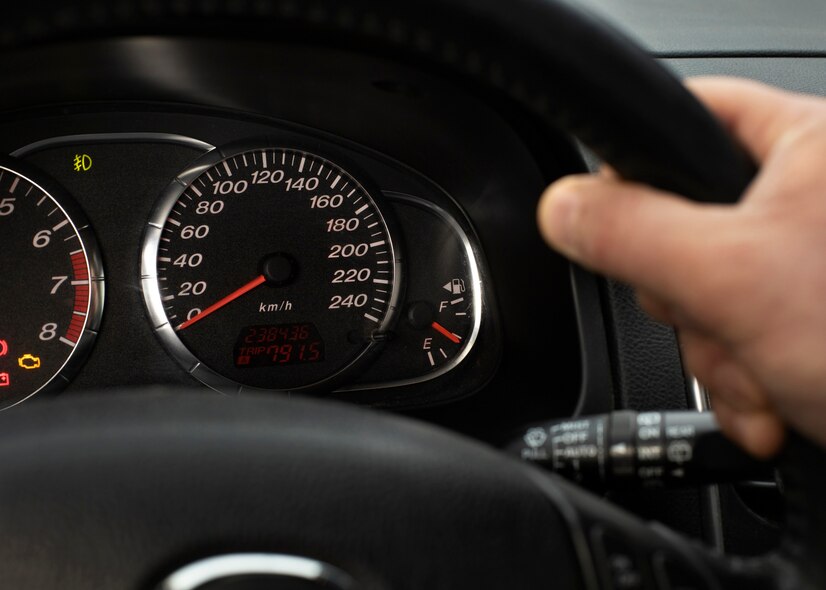In the realm of automotive engineering, achieving optimal engine performance is a continuous pursuit. Engineers and enthusiasts alike seek ways to maximize power, efficiency, and reliability. One essential component in this quest is the fuel pressure regulator.
Often overlooked, this small device plays a crucial role in engine optimization, ensuring that the engine receives the right amount of fuel at the right pressure.
In this article, we delve into the workings of the fuel pressure regulator and explore how it contributes to engine optimization.
Understanding the Fuel Pressure Regulator
The fuel pressure regulator is a critical component within an internal combustion engine’s fuel system.
Acting as a guardian of fuel pressure, it ensures the precise delivery of fuel to the engine cylinders for efficient combustion.
Employing a spring-loaded diaphragm mechanism, it adjusts fuel flow to maintain optimal pressure, thus enhancing engine performance and longevity.
What is a Fuel Pressure Regulator?
A fuel pressure regulator is an essential device integrated within the fuel system of an internal combustion engine. It serves a pivotal role in maintaining optimal engine performance by regulating the pressure of fuel delivered to the fuel injectors.
By ensuring a consistent fuel pressure, the regulator facilitates proper atomization and combustion of fuel within the engine cylinders.
This process is critical for achieving efficient power generation and maximizing fuel economy while minimizing harmful emissions.
In essence, the fuel pressure regulator acts as a precision control mechanism, fine-tuning the delivery of fuel to meet the dynamic demands of engine operation across various driving conditions.
How Does it Work?
The fuel pressure regulator employs a sophisticated spring-loaded diaphragm mechanism to regulate fuel pressure within the engine’s fuel system.
Situated along the fuel rail, it constantly monitors the pressure levels to ensure precise control. When the pressure surpasses the predetermined threshold, the regulator’s valve opens, enabling excess fuel to flow back into the fuel tank, thus averting over-pressurization.
Conversely, if the pressure falls below the designated set point, the valve closes to prevent fuel wastage, thereby maintaining the vehicle’s optimal pressure levels for efficient engine operation.
This dynamic adjustment mechanism guarantees that the engine consistently receives the correct fuel volume and pressure, vital for sustaining proper combustion and overall performance across diverse driving conditions.
Fuel Pressure Regulator’s Role

The fuel pressure regulator plays a crucial role in optimizing engine performance. By regulating fuel delivery and pressure, it contributes to enhanced efficiency, improved fuel economy, and smoother engine operation. Understanding its role is fundamental to maximizing the potential of internal combustion engines.
Optimizing Fuel Delivery
One of the primary ways the fuel pressure regulator contributes to engine optimization is by ensuring consistent and precise fuel delivery.
By maintaining the correct fuel pressure, the regulator ensures that the engine receives the appropriate amount of fuel for combustion under various operating conditions.
Enhancing Fuel Efficiency
Efficiency is paramount in engine optimization, and the fuel pressure regulator plays a crucial role in this aspect.
By controlling fuel pressure, the regulator helps to prevent fuel wastage and ensures that fuel is utilized efficiently. This optimization leads to improved fuel economy and reduced emissions.
Promoting Engine Performance
Achieving optimal engine performance requires a precise balance of fuel and air. The fuel pressure regulator helps maintain this balance by delivering the right amount of fuel at the correct pressure, ensuring smooth and consistent engine operation. This not only enhances overall performance but also prolongs the life of engine components.
Engine Optimization Benefits
Engine optimization offers multifaceted advantages crucial for optimal vehicle performance. Through precise fuel regulation, enhanced durability, and reduced emissions, the benefits of engine optimization with a fuel pressure regulator extend beyond mere power enhancement, encompassing longevity and environmental stewardship.
Improved Power Output
By ensuring that the engine receives the correct amount of fuel at all times, the fuel pressure regulator contributes to improved power output.
Consistent fuel delivery leads to more efficient combustion, resulting in enhanced engine performance and responsiveness.
Enhanced Durability
Engine optimization through the use of a fuel pressure regulator can also lead to increased durability and longevity of engine components.
By preventing fuel starvation or flooding, the regulator helps to reduce wear and tear on critical engine parts, leading to a longer service life.
Reduced Emissions
In today’s environmentally conscious world, reducing emissions is a top priority for automotive engineers.
Engine optimization with a fuel pressure regulator can help achieve this goal by ensuring efficient combustion and minimizing fuel wastage.
This leads to lower levels of harmful emissions, contributing to a cleaner and greener environment.
Conclusion
The fuel pressure regulator may be a small and often overlooked component, but its role in engine optimization cannot be overstated.
From ensuring precise fuel delivery to enhancing efficiency and performance, the fuel pressure regulator plays a vital role in maximizing the potential of internal combustion engines.
As automotive technology continues to evolve, engineers will undoubtedly continue to harness the power of the fuel pressure regulator to achieve even greater levels of engine optimization.




